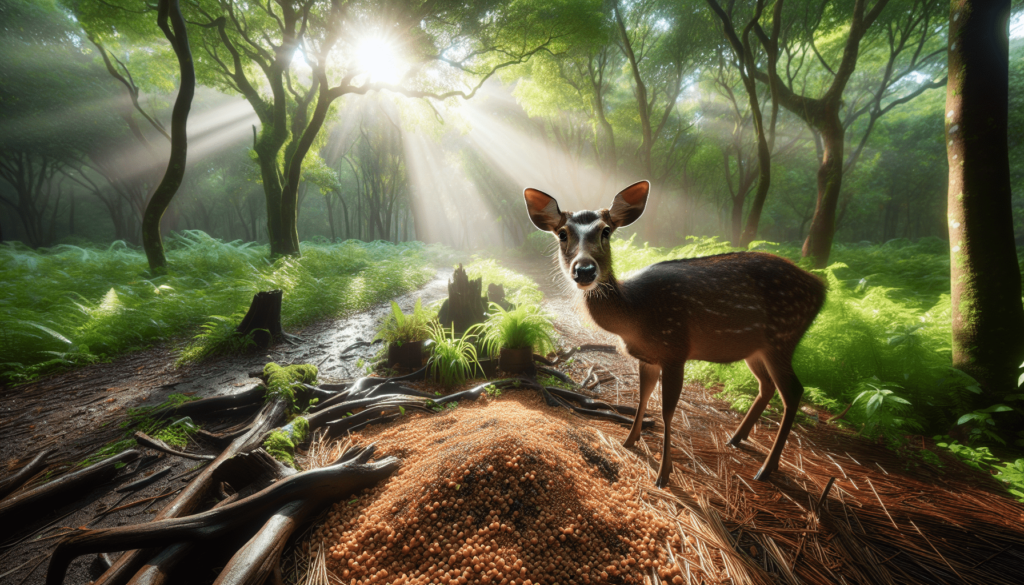
Have you ever wondered how the way you feed deer impacts their behavior? The relationship between humans and wildlife is intricate, and the practices we adopt can create ripples in the behaviors of these beautiful creatures. Understanding these shifts is essential for anyone who loves observing deer or who is involved in wildlife management.
Understanding Deer Behavior
Deer’s behavior is influenced by various factors, including environmental conditions, predator presence, and, more importantly, the availability of food resources. When you think of deer, you might picture them grazing peacefully in a meadow. However, their behavior is complex and can shift dramatically based on what and how often they are fed.
Natural Feeding Habits of Deer
Deer are naturally opportunistic feeders. They adapt to their environment and the seasons, consuming grasses, leaves, fruits, and nuts. During specific times of the year, they might favor certain foods based on nutritional needs and availability. Recognizing their natural feeding habits helps you understand how your feeding practices may disrupt or enhance their behaviors.
The Impact of Supplemental Feeding
When you introduce supplemental feeding into a deer’s habitat, it can change their pattern of movement, social structure, and overall behavior. While the intention of feeding deer is often to help them, it can lead to unintended consequences that affect their well-being.
Short-term Behavioral Changes
Feeding practices can lead to immediate shifts in deer behavior. For example, when food is placed in a specific location, deer may frequent that area more often, which increases their exposure to potential predators. This could result in a more cautious approach to feeding, as deer might become skittish and engage in more frequent escape behaviors.
Long-term Behavioral Adaptations
Over time, if feeding becomes a regular practice, deer may alter their natural behaviors. They might start relying more heavily on human-provided resources rather than foraging for natural food. This shift can lead to a decrease in foraging skills and alter their migration patterns, which can have broader implications for both their health and ecological balance.

Nutrition and Health Considerations
When implementing feeding practices, being mindful of the nutritional content of the feed you provide is vital. The health of deer largely depends on what they consume, and poor feeding practices can lead to health issues.
Nutritional Needs of Deer
Deer require a balanced diet rich in proteins, carbohydrates, vitamins, and minerals. During different seasons, their nutritional needs change. For example, does require extra nutrients during pregnancy and lactation, while growing fawns need more protein than adults. By understanding these needs, you can make informed choices about what to feed deer.
Risks of Improper Feeding
Feeding deer inappropriate foods, such as corn or processed grains, can lead to severe health consequences. These foods can cause digestive issues, resulting in conditions like acidosis, which may be fatal. Feed designed specifically for deer can help mitigate these risks.
Social Dynamics and Behavior Changes
Feeding practices can also influence the social structure of deer herds. This is particularly evident when multiple groups of deer come together to feed.
Increased Competition
When you place food in a specific location, it attracts multiple deer, which can lead to increased competition. This competition may result in aggressive behaviors as deer vie for resources, especially during the rutting season. Such dynamics can disrupt traditional hierarchies within the herd, creating stress that can affect their overall health and well-being.
Altered Mating Behaviors
Feeding can also alter mating behaviors, particularly if deer are accustomed to meeting in particular areas. Bucks may spend less time searching for does as they become more focused on food, which could impact reproduction rates within the population.

The Role of Seasonal Changes
Understanding how seasonal changes impact deer behavior is crucial in assessing the effects of feeding practices. Different seasons bring different challenges and dynamics.
Winter Feeding Challenges
In winter, deer may struggle to find food due to snow cover and the unavailability of natural forage. Feeding them can provide essential nutrients during this harsh season. However, if you create a concentrated feeding area, it can inadvertently attract predators looking for an easy meal, putting the deer at risk.
Spring and Summer Feeding
During spring and summer, natural food sources are typically abundant. Introducing supplemental feeding during these times may not be necessary, as deer are already able to find nutritious forage. Overfeeding can lead to dependency, while reducing their foraging behavior.
Habitat Considerations
The environment and habitat in which deer live significantly affect their behavior. Assessing these factors can help in understanding how feeding practices impact them.
Habitat Quality
The quality of the habitat plays a critical role in deer behavior. If deer are fed in a healthy habitat with good food sources, they may continue foraging naturally. Conversely, if fed in an area lacking in natural food sources, feeding may become their primary means of sustenance.
Landscape Features
Landscape features such as water sources, cover, and available forage can influence deer behavior. If your feeding practices consider these elements, you can effectively create a more beneficial environment for the deer.
Ethical Considerations in Feeding
With the rise of trophy hunting and wildlife observation, there are ethical considerations surrounding feeding practices. Understanding the balance between human intervention and allowing natural behaviors to thrive is important.
Wildlife Management Ethics
As someone interested in wildlife, you might find yourself considering the ethics behind feeding practices. Managing wildlife responsibly means considering the long-term effects of human actions on deer and their ecosystems. This includes adjusting your feeding practices to ensure they do not inadvertently harm the deer populations.
Sustainability of Feeding Practices
Sustainability is key to maintaining healthy deer populations. You should consider your feeding habits and their broader implications for the ecosystem. Educating yourself on sustainable practices can help protect deer and their habitats for future generations to enjoy.
Community and Deer Feeding Practices
Your actions can inspire others in your community to adopt responsible practices when it comes to feeding deer. Building awareness around the best practices can help improve the overall health and behavior of local deer populations.
Building Awareness
Start conversations with your community about the effects of feeding deer. Sharing information can lead to more informed practices that benefit both deer and humans. Consider hosting events or discussions focused on wildlife management and the impact of feeding practices.
Collaboration with Wildlife Organizations
Collaborating with local wildlife organizations can help spread awareness and encourage responsible feeding practices. These organizations can provide valuable resources and information to assist you in making informed decisions regarding deer feeding in your area.
Conclusion
Recognizing the significance of feeding practices involves understanding the broader implications of your actions. The behavior of deer, influenced by improper feeding or over-dependency on human-provided resources, highlights the delicate balance between wildlife conservation and human intervention. As you navigate this path, always consider the health and welfare of the deer population while promoting responsible and ethical care that respects their natural behaviors.
Ultimately, when you take on the role of a responsible deer feeder, you contribute to the well-being of these magnificent animals and promote a healthier ecosystem. Understanding how your practices shape the behaviors of deer empowers you to create a positive impact on the environment and the wildlife that inhabits it.





